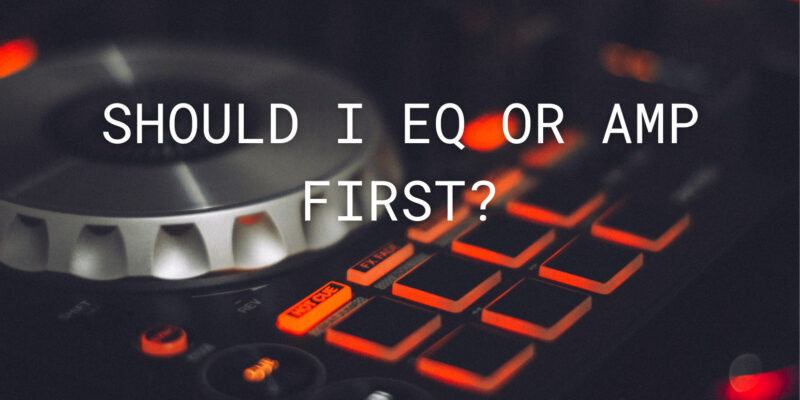When it comes to shaping your guitar tone, the order in which you apply equalization (EQ) and amp settings can significantly impact the final sound you achieve. Musicians and sound engineers often debate whether it’s better to EQ before or after the amplifier in your signal chain. In this article, we’ll explore the pros and cons of each approach to help you decide which order is best for your desired guitar tone.
EQ Before the Amp (Pre-EQ)
EQ adjustments made before the amplifier can have a substantial impact on your guitar’s tone, affecting how your amp processes the sound. Here are the advantages and disadvantages of pre-EQ:
Pros:
- Tonal Shaping: Pre-EQ allows you to sculpt your guitar’s sound before it reaches the amplifier. This can be particularly useful if you need to address specific tonal issues with your guitar or to match your instrument to the amp’s characteristics.
- Clarity and Precision: By applying EQ adjustments at the front end of your signal chain, you have more control over individual frequencies, which can help you achieve a cleaner, more precise tone.
- Feedback Control: Pre-EQ can help reduce feedback issues by not boosting frequencies that are prone to feedback in your amp.
Cons:
- Amp Interaction: Some guitarists prefer the way their amp interacts with their guitar’s natural tone before applying EQ adjustments. Pre-EQ might alter the amp’s response in a way that doesn’t suit their playing style.
EQ After the Amp (Post-EQ)
Applying EQ after the amp can be advantageous in its own right. Here are the pros and cons of post-EQ:
Pros:
- Amp Character Preservation: Post-EQ allows you to retain the natural characteristics of your amplifier. Many guitarists appreciate the unique tones produced by their amps and prefer to adjust their sound after the amp has done its work.
- Amp Distortion Control: If you want to shape the distortion characteristics of your amp, post-EQ can be beneficial. It allows you to boost or cut frequencies after the amp’s natural distortion has occurred.
- Simple Signal Chain: Post-EQ simplifies your signal chain, as you don’t need additional EQ pedals or devices before the amp.
Cons:
- Limited Tonal Shaping: Post-EQ might not be as effective at addressing specific tonal issues with your guitar or compensating for undesirable amp characteristics.
- Feedback Risk: Boosting frequencies after the amp can increase the risk of feedback, as the amplified signal is more susceptible to resonance and unwanted noise.
Conclusion
The decision of whether to apply EQ before or after your guitar amp ultimately depends on your specific tonal goals and preferences. Both approaches have their merits, and many professional guitarists use a combination of pre-EQ and post-EQ to achieve their desired sound.
Experiment with both options and consider the characteristics of your guitar, amp, playing style, and musical genre. Listen carefully to how EQ adjustments affect your tone, and trust your ears to guide you toward the best order for shaping your guitar’s sound. Ultimately, there’s no one-size-fits-all answer, and the right choice is the one that helps you achieve the tone that suits your musical vision.

